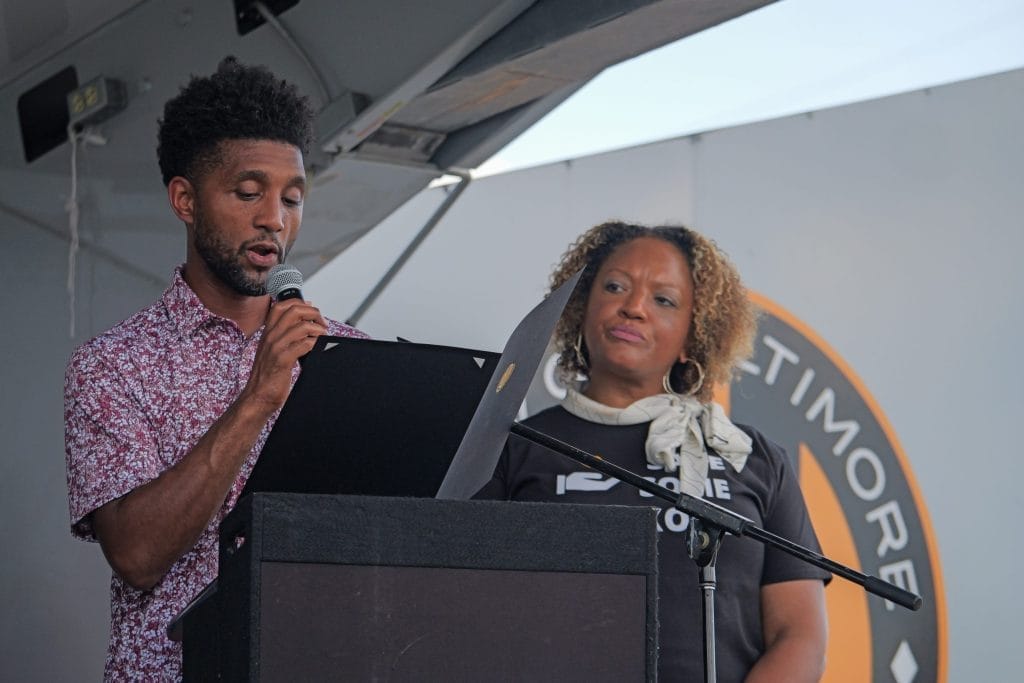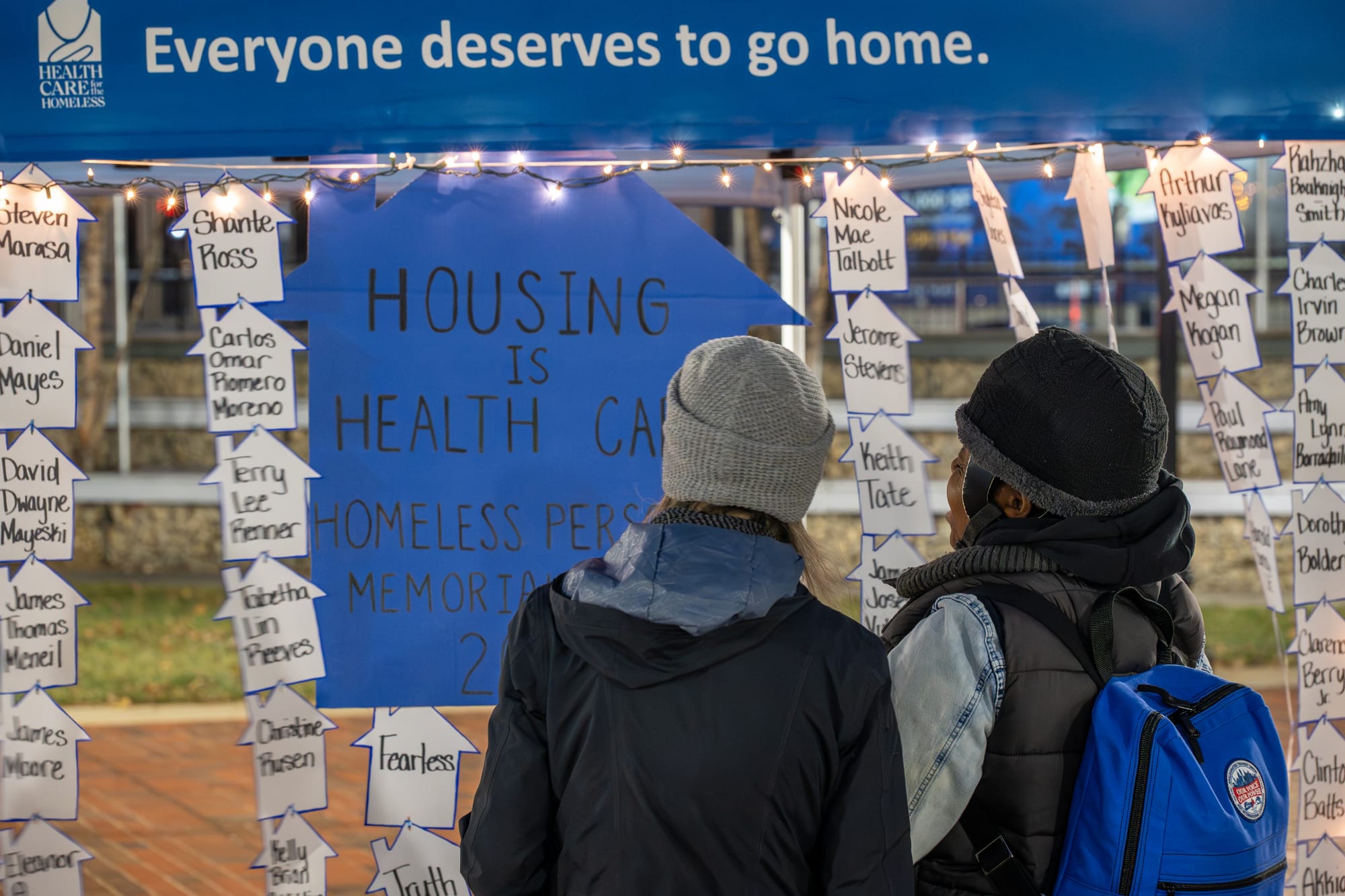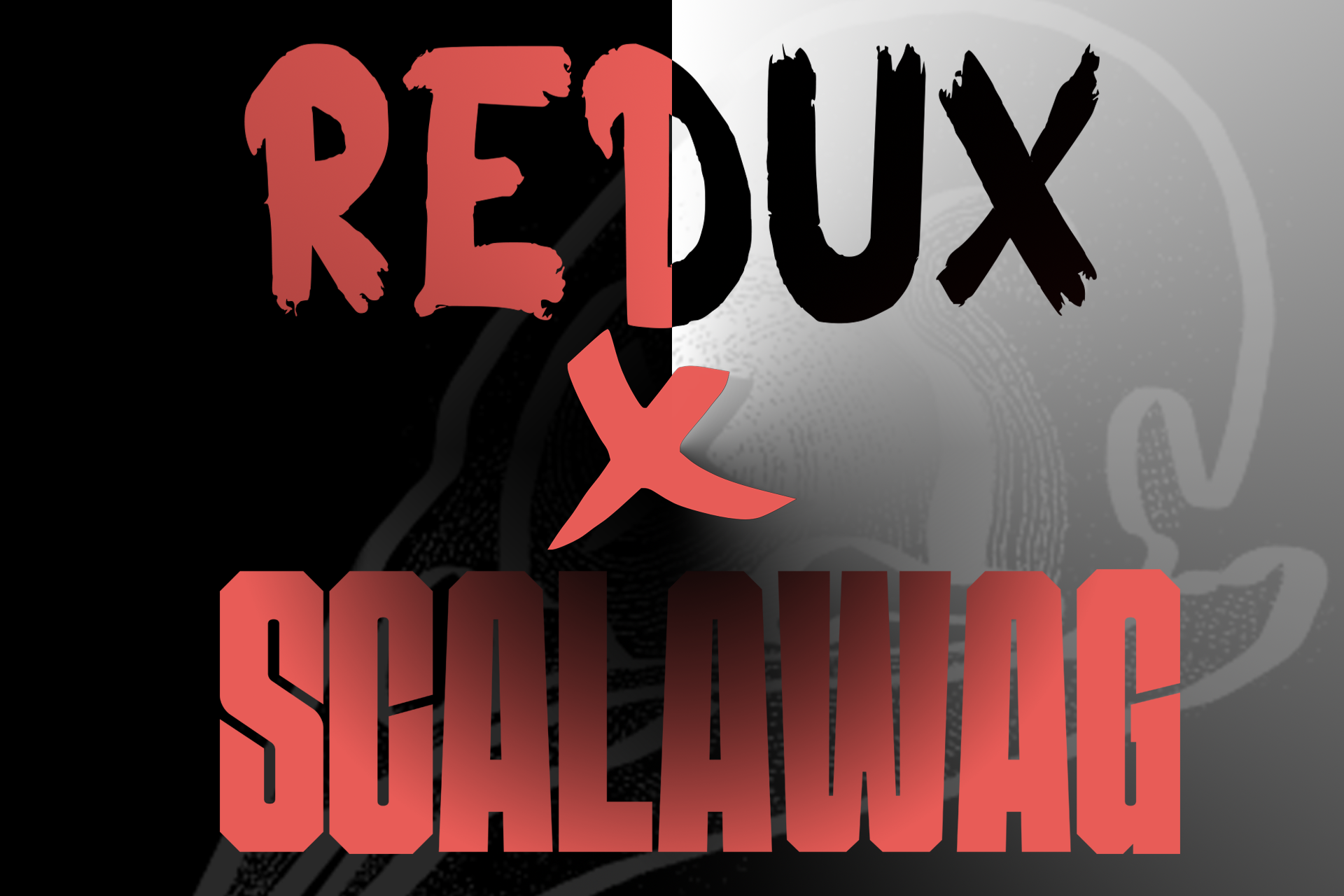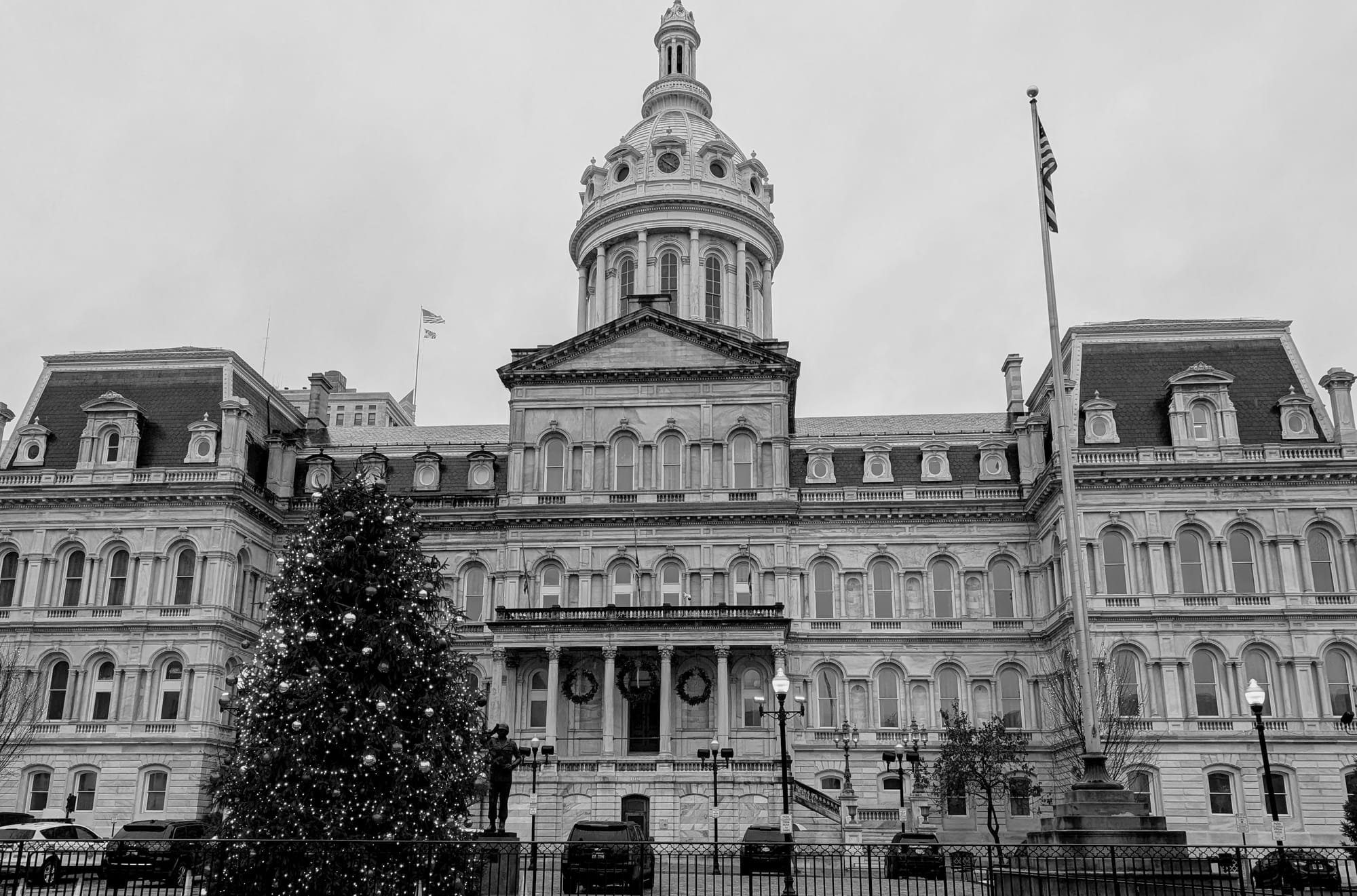
As Mayor Brandon Scott stood before a packed theater for his State of the City address this week, he extolled his administration's accomplishments before shifting the focus toward Baltimore's future — a speech that included a brief nod to its progress in fighting a devastating overdose crisis.
The two-term Democrat, speaking in front of a massive video display at the France-Merrick Performing Arts Center on Monday, aimed to bestow confidence in his leadership as he helms a city reckoning with the pernicious ripple effects of policies past and present. Yet the event came against a macabre backdrop: Thousands of Baltimoreans have died of overdoses under his leadership, many of whom suffered preventable deaths as his administration remained largely mum on the crisis because of ongoing litigation.
Nevertheless, the public health calamity seems to be losing its steam.
"Thanks to targeted investments and community support, fatal opioid overdoses were down 35% last year," Scott said. "That’s progress, but it will take time and resources to repair the damage done to our communities. And that takes accountability for everyone responsible for the spread of opioids in our communities. Not just dealers but also Big Pharma companies who profited from the overprescription of these drugs."
The mayor was correct in saying that 2024 saw a historic drop in overdose deaths; he just got the numbers wrong. There were 774 deaths last year, which is a 28.5% decrease from the year prior.
The statistic he cited was based on the first batch of preliminary data released by the Maryland Department of Health earlier this year. Changes to said data are common as coroners finalize causes of death.
Still, the last time the city saw fewer than 800 deaths was in 2017, when 761 deaths were reported, the data shows.
The lower death rate has seemingly continued into 2025. In the 12-month period ending in March, Baltimore saw 679 deaths, a death rate of 115.9 per 100,000 people.
To put that into perspective: Last February, when I wrote an article analyzing how Baltimore became the epicenter of the nation's overdose crisis — and the city with the highest fatal overdose rate in the nation — the death rate was 174.1 deaths per 100,000 people.
The swelling overdose death toll experienced under Scott's leadership was an inherited issue, as those who use drugs had been dying at increasingly high rates for more than a decade. And, like those before him, he's been working within the confines of a prohibitionist framework and the racist War on Drugs.
Those factors have left Baltimore with some harsh realties. Neighborhoods in West Baltimore have consistently suffered from the most deaths, a perpetual pattern that underscores the crisis's disproportionate impact on the Black Butterfly.
Black residents comprised 65% of all overdose deaths in 2024, I reported in February, when the 2024 data was first released. Black men specifically accounted for nearly half of all deaths, with those 55 years old or older being at the highest risk.
Studies have shown that Black men are significantly more likely to die of overdoses, with fatal overdoses among the demographic increasing fourfold over the past decade nationally.
That state data shows just a modest difference in death rates among white and Black Baltimoreans. However, more granular data shows a much starker disparity. The Baltimore Banner obtained such data through a lawsuit.
Based on that data, an investigation by the Banner last year found that older Black men account for nearly 30% of overdose deaths, yet they only comprise 7% of the city's population. That equates to a death rate 20 times that of the rest of the country, the outlet reported.
The ZIP codes with the highest deaths in the most recent 12-month period were 21215, 21217 and 21223, which had 104, 77 and 52 deaths, respectively. All of those cover overwhelmingly Black neighborhoods in West and Northwest Baltimore.
The recent decline in deaths seems to be part of a national trend, with the country's overall death toll dropping for the first time in five years in 2023.
It would be foolish not to note, though, that it also speaks to the efficacy of local harm reduction initiatives, carried out by the city and a contingent of nonprofit organizations. Together, they form a crucial, life-saving harm reduction network serving those who use drugs in Baltimore.
The services they offer include syringe service programs, connecting drug users to mental health and addiction treatment and a variety of other outreach efforts.
One of the most important efforts — and one with easily accessible data to support it — is naloxone distribution and training.
First responders alone have administered naloxone on more than 1,800 occasions in the 12-month period ending in March, state health department data shows. It's unclear how many of those effectively revived the recipients, but it undoubtedly saved many.
And that's likely far from the actual number of times naloxone was administered in Baltimore. The medication is so widespread — used by harm reduction workers, loved ones and random individuals on the street — that it has likely saved many more lives.
Meanwhile, there have been more than 3,200 emergency room visits related to overdoses during those 12 months.
This data demonstrates how the city's current harm reduction infrastructure operates — and how many overdose deaths it can prevent. What remains to be seen is what can be done to make it even more robust.
As the overdose crisis continues to decimate communities, addressing health disparities and overdose prevention have proven to be at the cornerstone of the city's legal battles against opioid distributors and manufacturers.
The city is already slated to receive nearly $670 million from five settlements and a jury verdict late last year in the first phase of an ongoing case against distributors McKessons and Cencora, formerly AmerisourceBergen.
About $200 million has already been received, officials have said.
In less than two weeks, Baltimore will learn whether the two massive opioid distributors must cough up billions of dollars more to fund its comprehensive abatement plan.
Baltimore City Circuit Court Judge Lawrence P. Fletcher-Hill has said he will rule on the case against McKesson and Cencora, formerly AmerisourceBergen, by May 6. At a hearing last month, he set the self-imposed deadline after attorneys made post-trial arguments in a case predicated on allegations that they were largely responsible for the city's swelling death toll by recklessly peddling prescription opioids.
To abate the damage caused by the companies, the city needs a whopping $5.2 billion, attorneys and expert witnesses have argued.
"Just like we went after gun companies for putting illegal weapons on our streets. We sued these companies directly. Big Pharma didn’t give it up — we took it," Scott said on Monday. "Thanks to the leadership of City Solicitor Ebony Thompson and her team. We’ve recovered nearly $700 million in settlements and legal victories, and we’re investing that money directly into our neighborhoods through a comprehensive strategic plan."
The windfall of funds could significantly expand overdose prevention efforts if used correctly. It could also usher in a new era of transparency about drugs and overdose deaths in Baltimore.
It's been more than a year since officials largely stopped responding to requests for comment on matters related to the overdose crisis, citing the ongoing litigation.
Baltimore City Council members have attempted to hold public hearings on two occasions, only to cancel them under pressure from the mayor's office, most recently in February. The first time it happened, the move spurred protests outside City Hall.
With the judge's upcoming decision likely kick-starting a lengthy appeals process, I initially feared it could prolong the city's silence. A senior official recently told me, however, that would likely not be the case.
I hope they are right.
On the other hand, there are still looming concerns about how the restitution funds will be spent amid ongoing threats to public health funding.
At the first meeting held by the city's new Opioid Restitution Advisory Board last month, members expressed fears that federal funding cuts at the crux of President Donald Trump's austerity measures could lead the city to use restitution dollars to supplant funding for existing programs rather than new ones. Public health experts overwhelmingly oppose this practice.
As evidenced by Scott's budget proposal unveiled earlier this month, that's already happening — even without accounting for any of the Trump administration's cost-cutting orders that are now being challenged in court.
Though the budget would allocate $9.8 million to such services, an 87% increase over the year prior, it suggests using more than $37 million from the fund.
The money that would specifically be allocated for the city's syringe service program, 911 nurse triage program and population health program would all be taken from the restitution fund rather than the city's general fund, senior officials have said.
That accounts for millions of dollars.
With all this in mind, the city is undoubtedly at a critical juncture in combating the overdose crisis. Baltimore came into 2025 with a victory — a notable decline in overdose deaths — but myriad unknowns remain.
The mayor has argued that, despite room for progress, the state of the city is strong. Yet I'm not sure the same can be said about the city's overdose crisis.
The city's death rate remains astonishingly high. Black residents continue to be arrested for drug-related crimes at disproportionate rates, which can upend their lives, while de facto decriminalization was done away with by State's Attorney Ivan Bates. The mayor has refused to fight for paraphernalia decriminalization or overdose prevention centers at the city level, delegating that decision to state legislators.
Last year was the first time in more than a decade that the city experienced a notable drop in overdose deaths. It's too early to become complacent, and the tides could turn at any moment with an increasingly lethal drug supply.
Hundreds of millions of dollars are heading to the city's coffers, regardless of the outcome of the ongoing litigation.
This is an unprecedented opportunity amid an unprecedented crisis. We may have come into 2025 with some good news, but now it's time to take that money and do everything within our power to ensure drug users stay alive.

Miss last week's newsletter? You'll want to check it out:
In less than three weeks, Baltimore will learn whether two massive opioid distributors must cough up billions of dollars to fund its comprehensive abatement plan — a decision that could revolutionize harm reduction in the epicenter of the nation's overdose crisis.
Baltimore City Circuit Court Judge Lawrence P. Fletcher-Hill has said he will rule on the case against McKesson and Cencora, formerly AmerisourceBergen, by May 6. At a hearing last month, he set the self-imposed deadline after attorneys made post-trial arguments in a case predicated on allegations that they were largely responsible for the city's swelling death toll by recklessly peddling prescription opioids.
To abate the damage caused by the companies, the city needs a whopping $5.2 billion, attorneys and expert witnesses argued late last year.
Click here to read the full newsletter.
Mobtown Redux's Overdose Data Dashboard is frequently updated with the latest local, state and national data:
Baltimore's overdose death toll in 2024 has increased to 774 — this is preliminary data that's subject to change as causes of death are determined.
In the 12-month period ending in March, Baltimore saw 679 deaths, a death rate of 115.9 per 100,000 people. Statewide, there were 1,549 deaths, a death rate of 25.1 per 100,000 people.
Neighborhoods in West Baltimore saw the most deaths, an unfortunate pattern in this data.
Check out Mobtown Redux's Overdose Data Dashboard here.
Click here to learn more about harm reduction resources in the Baltimore area.
"Fentanyl Pipeline: How a Chinese Prison Helped Fuel a Deadly Drug Crisis in the United States," ProPublica reports:
China’s vast security apparatus shrouds itself in shadows, but the outside world has caught periodic glimpses of it behind the faded gray walls of Shijiazhuang prison in the northern province of Hebei.
Chinese media reports have shown inmates hunched over sewing machines in a garment workshop in the sprawling facility. Business leaders and Chinese Communist Party dignitaries have praised the penitentiary for exemplifying President Xi Jinping’s views on the rule of law.
But the prison has an alarming secret, U.S. congressional investigators disclosed last year. They revealed evidence showing that it is a Chinese government outpost in the trafficking pipeline that inundates the United States with fentanyl.
Click here to read the full article.









Comments